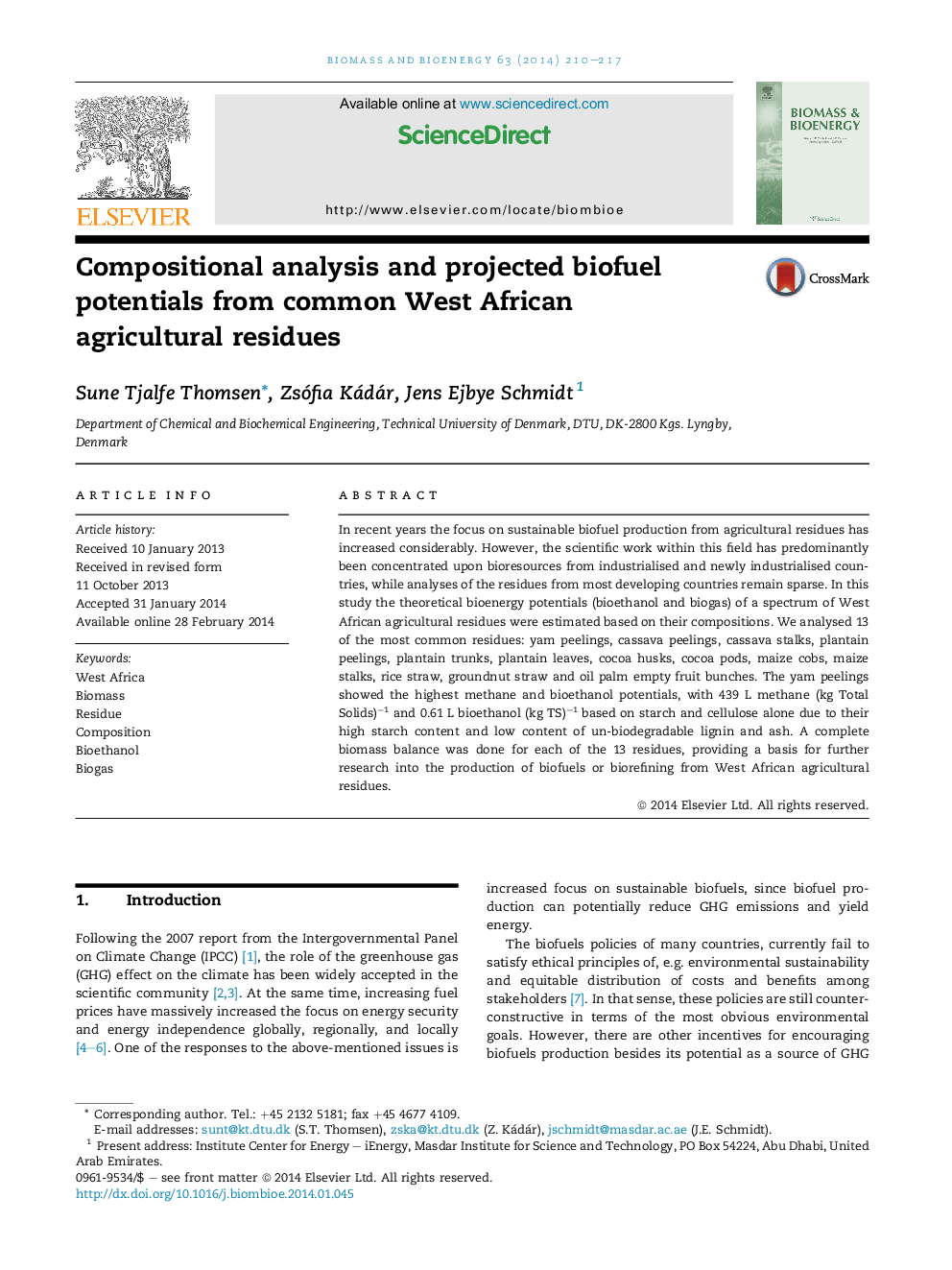| Article ID | Journal | Published Year | Pages | File Type |
|---|---|---|---|---|
| 676927 | Biomass and Bioenergy | 2014 | 8 Pages |
•A complete biomass balance for 13 West African agricultural residues was completed.•Several of the residues were analysed for the first time.•Theoretical bioethanol potentials based on starch, C6- and C5 sugars were estimated.•Theoretical maximum biogas potentials were estimated.•Recommendations of optimal utilisation of West African biomasses were presented.
In recent years the focus on sustainable biofuel production from agricultural residues has increased considerably. However, the scientific work within this field has predominantly been concentrated upon bioresources from industrialised and newly industrialised countries, while analyses of the residues from most developing countries remain sparse. In this study the theoretical bioenergy potentials (bioethanol and biogas) of a spectrum of West African agricultural residues were estimated based on their compositions. We analysed 13 of the most common residues: yam peelings, cassava peelings, cassava stalks, plantain peelings, plantain trunks, plantain leaves, cocoa husks, cocoa pods, maize cobs, maize stalks, rice straw, groundnut straw and oil palm empty fruit bunches. The yam peelings showed the highest methane and bioethanol potentials, with 439 L methane (kg Total Solids)−1 and 0.61 L bioethanol (kg TS)−1 based on starch and cellulose alone due to their high starch content and low content of un-biodegradable lignin and ash. A complete biomass balance was done for each of the 13 residues, providing a basis for further research into the production of biofuels or biorefining from West African agricultural residues.
